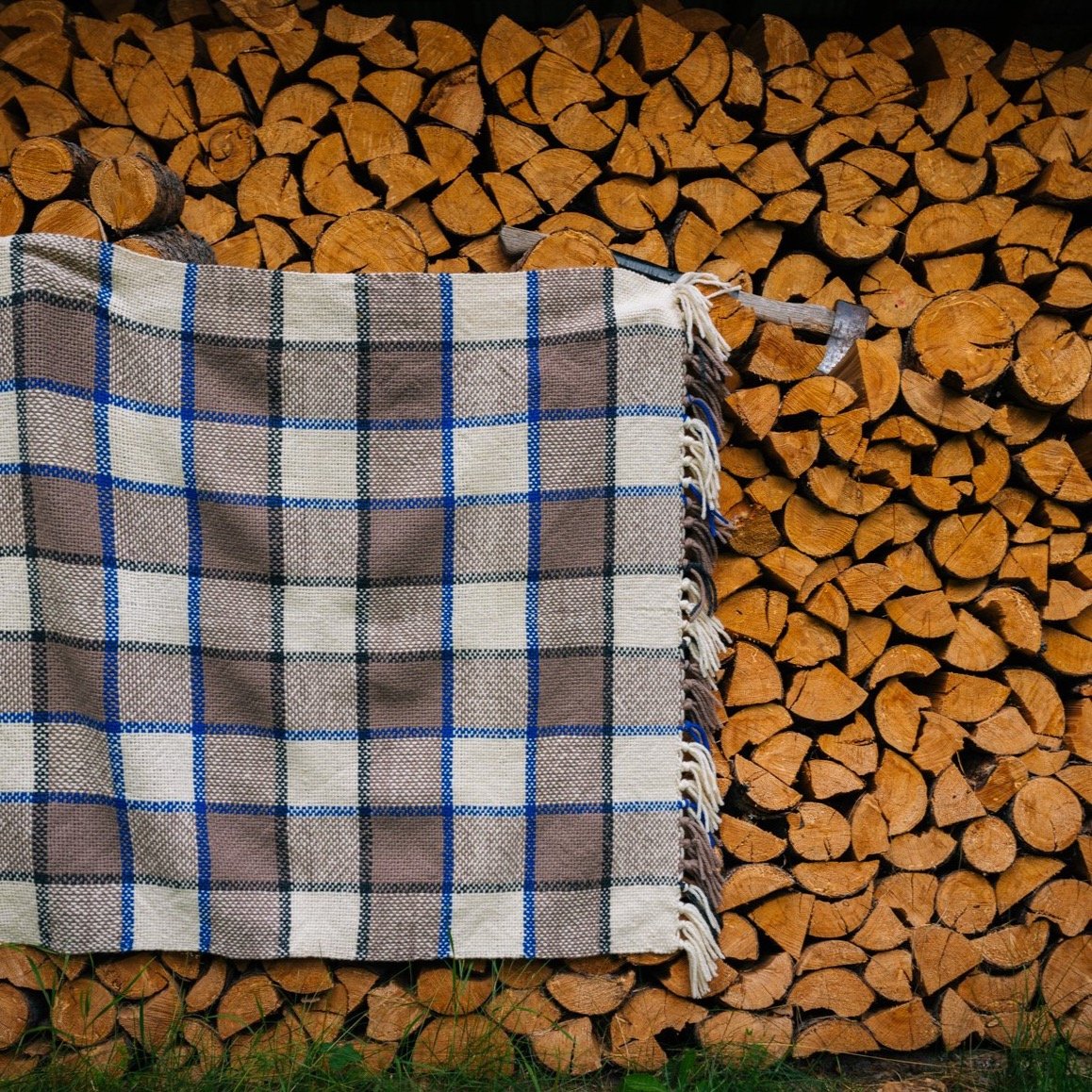Today we’re talking about double weave: the structure that is on every new weaver’s bucket list! It’s easy to see why double weave captures weavers’ imaginations. In double weave, you make two layers of cloth at the same time. It feels like a cheat code, or a magic trick. And if that wasn’t enough, you can also make those two layers interact in different ways on your loom to create tubes, colour blocks, or double-wide cloth. All this possibility, and all from a threading and treadling that is not that much more complex than plain weave!
Here’s the basics of how double weave works on a four-shaft loom. To weave plain weave, you really only need two shafts. So you use shafts 1 and 2 to weave one layer of plain weave, while shafts 3 and 4 weave a second layer. The really cool part is that you can do this with a simple straight draw threading (1,2,3,4)! You just need to adjust your tie-up for double weave and you’re ready to get weaving. One word of caution for counterbalance loom weavers: the tie-up requires lifting and lowering either one or three shafts at a time, so you may find it difficult to get a good shed unless you have a shed regulator. Weavers with jack looms, table looms, and countermarche looms, weave away!

The most common use for double weave is to make double-width cloth. To do so, you throw your shuttle so that it connects the two layers at the left-hand side and leaves the right side open. You can easily visualize this by folding a piece of paper in half. The fold is like the left side of the weaving: it is where the connection is. The side opposite the fold is like the right side of the weaving: open and free to move. When you unfold the paper, you have something twice as wide as the folded piece. Your weaving looks like that folded piece of paper while it’s on the loom. When you cut it off, you get to unfold it and see the whole thing! All of a sudden, your Baby Wolf can make Mighty-Wolf-sized cloth… and beyond.
When you’re weaving double-width, it’s key to pay attention to the side where the two layers join. You want to be generous with your weft there, so that you don’t end up with excessive draw-in. In normal weaving, excessive draw-in shows up as pinched sides. In double-weave, it shows up as an ugly stripe of dense cloth smack dab in the middle of your cloth! One of our Master Weavers, Shannon Nelson, recommends threading an extra end of slippery cotton right at the join, then gently pulling it out after you cut off your project. This both keeps your project from drawing in and provides a little breathing room when the thread is removed.

Double-width double weave is particularly useful for making big, snuggly pieces, like our Reflections Double Weave Blanket. Using double weave lets you make a 45”-wide blanket on a 26” loom… and that’s finished width after draw-in and shrinkage! You can’t even make a 45”-wide finished project on a 45” loom without using double-weave. For pieces that you want to wrap up in, double weave is essential. It expands your options without requiring you to somehow work a 60” loom into your craft space.

Now here’s where things get really cool. With four shafts you can only do two plain weave layers. But with an eight shaft loom you can assign four shafts to each layer, letting you do two layers of twill, or trade the layers back and forth to create more complex colour effects. Our Sunroom Throw pattern is an advanced 8-shaft project that uses double weave to create strong blocks of colour. The throw isn’t double-width. Instead of simply connecting the two layers at one side, it swaps sections of the two layers back and forth in blocks. This creates a dense but still drapey cloth that is heaven to wrap yourself up in. Without using double weave, the dense sett of this project would make cloth as stiff as cardboard. But using double weave lets you achieve results that would otherwise be impossible.
Our two double weave patterns are only the tip of the iceberg of what you can do with double weave. You can set up for double-width double weave and then connect both sides instead of only one, creating a tube that could become a cowl or a pillowcase. You can leave both sides open and swap layers every few inches, making a piece with dramatic 3D ripples. Trying out double weave is a great way to start thinking about the structure of your cloth instead of just working with its surface design and colours. And once you start weaving double weave, you’ll find it hard to stop. Like so many other kinds of weaving, it’s something that you can learn quickly and then explore for years.

